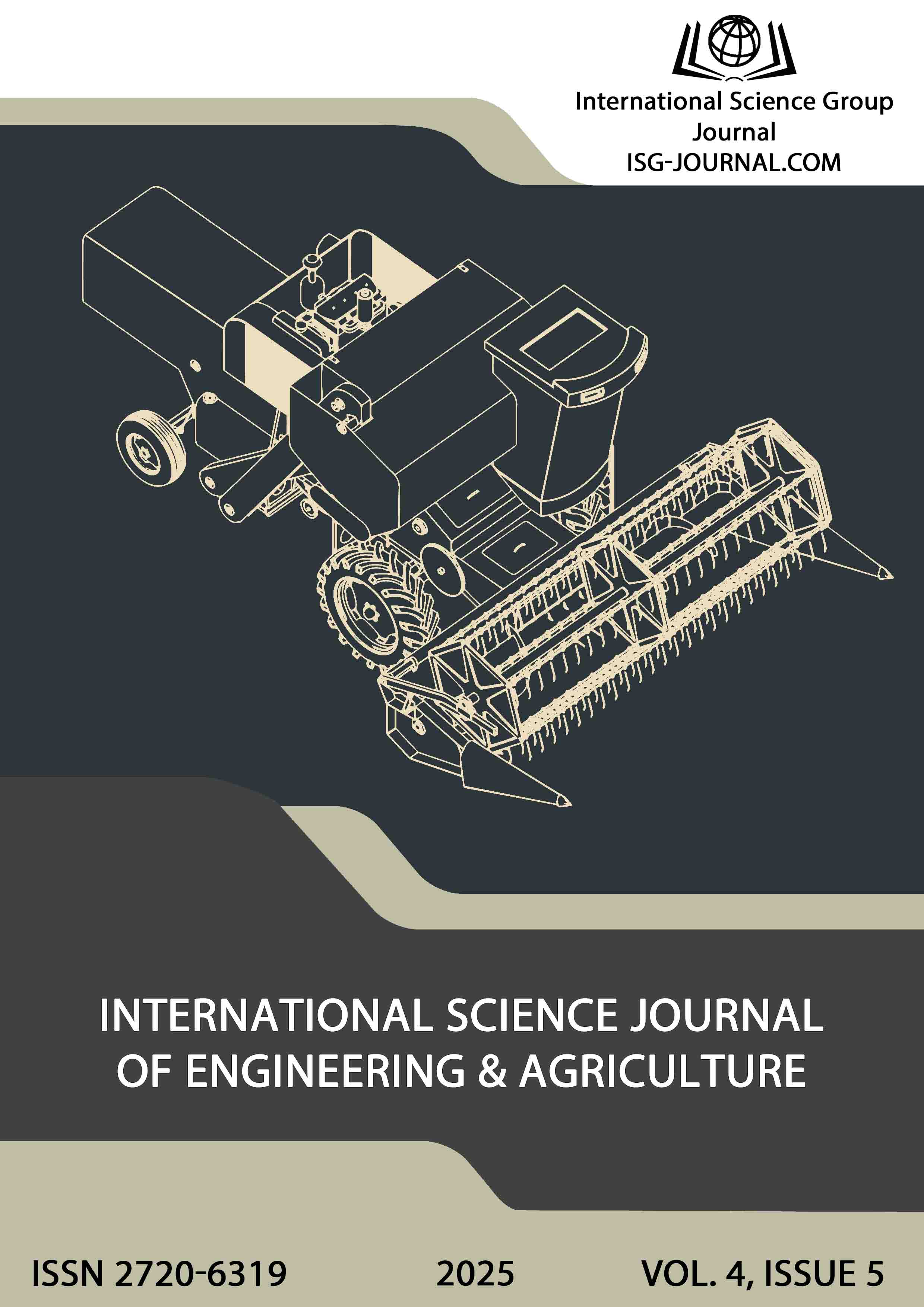Methodological approach to the information-functional integration of automated systems within components of critical infrastructure facilities
DOI:
https://doi.org/10.46299/j.isjea.20250405.01Keywords:
organizational system, critical infrastructure facility, automated system, model, modelingAbstract
This article presents a methodological approach to addressing the problem of information and functional integration of existing and prospective automated systems into a unified automated system, based on a model-driven representation of large-scale complex organizational systems, including critical infrastructure facilities (CIFs) and their components. The proposed model enables the analysis of information compatibility among existing automated systems and the functional completeness of tasks performed by the organizational system, as well as the identification of optimal interconnections among the systems’ components. Given the increasing complexity of technological processes and the rise of cyber-physical threats, there is a growing need for the development of a robust methodology for information-functional integration across automated systems of varying purposes and hierarchical levels into the unified automated system. The proposed approach is founded on the principles of modularity, functional decomposition, and adaptive interaction between components. This ensures holistic control of complex objects via a unified information environment and synchronized functional processes. The authors outline key methodological principles of integration, including the classification of typical information exchanges, the establishment of structural-functional dependencies between subsystems, and the determination of their compatibility and coherence. Special attention is paid to the development of a generalized architecture for the integration environment, which supports scalability, increases the reliability and security of information interaction due to the possibility of using unified system-wide solutions. A conceptual model is proposed to coordinate the functions of automated systems under dynamic environmental conditions—an aspect particularly relevant for CIFs that play a strategic role in national security and the uninterrupted functioning of governmental and societal systems. The practical implementation of the described approach significantly enhances management efficiency, reduces the risk of functional disruptions, and ensures the resilience of systems to destructive influences.References
Nielsen C.B., Larsen P.G., Fitzgerald J., Woodcock J., Peleska J. Systems of Systems Engineering: Basic Concepts, Model-based Techniques, and Research Directions. ACM Computing Surveys (CSUR) 2015, V. 48 (2), Article No.: 18, P. 1–41, DOI: https://doi.org/10.1145/2794381
Dr. Judith S. Dahmann and George Rebovich Jr. Systems Engineering for Capabilities. The Journal of Defense Software Engineering 2008/ https://apps.dtic.mil/sti/tr/pdf/ADA489896.pdf
Judith Dahmann, Jo Ann Lane, George Rebovich Jr., Kristen J. Baldwin. A Model of Systems Engineering in a System of Systems Context // 2008. URL: https://www.researchgate.net/publication/228576609_A_model_of_systems_engineering_in_a_system_of_systems_context
Banks, J., Carson, J. S., Nelson, B. L., & Nicol, D. M. (2010). Discrete-event system simulation (5th ed.). Prentice Hall.
Bari, A., Jaekel, A., & Bakhshi, R. (2019). Cyber resilience in critical infrastructures: A systems approach. Springer. https://doi.org/10.1007/978-3-030-20722-5
Barykin, S., Sergeev, S., Yadykin, V., & Erypalov, S. (2021). Integrated digital platforms for industry and logistics: Architecture and practical applications. Procedia Computer Science, 190, 302–307. https://doi.org/10.1016/j.procs.2021.06.043
Bondarenko, O., Djakov, V., & Nizhelska, O. (2020). Integrated management of complex organizational systems in a digital environment. Cybernetics and Systems Analysis, 56(3), 355–361. https://doi.org/10.1007/s10559-020-00214-0
Choi, D., & Lambert, J. H. (2017). Modeling interdependent risks for critical infrastructure systems. Risk Analysis, 37(6), 1146–1163. https://doi.org/10.1111/risa.12693
Dodonov, A. G., & Putiatin, V. G. (2016). Simulation process management for solving functional tasks on a computer modeling workstation of the ISOU AC. In Proceedings of the 5th International Scientific Conference “Modeling–2016” (pp. 225–228). IPME NAS of Ukraine.
Fishman, G. S. (1996). Monte Carlo: Concepts, algorithms, and applications. Springer. https://doi.org/10.1007/978-1-4757-2553-7
Horbulin, V. P., & Dodonov, O. G. (2023). Modeling complex for creating an automated control system integrating strategic, operational, and tactical command levels. Armament and Military Equipment, 2(38), 57–64.
Hossain, E., & Niyato, D. (2020). Smart grid communications and networking. Cambridge University Press.
Huang, X., Sun, H., Zhang, M., & Song, J. (2022). A comprehensive review of cyber–physical systems: Security issues and challenges. Future Generation Computer Systems, 130, 141–157. https://doi.org/10.1016/j.future.2022.01.002
Pang, Z., Guo, J., Dey, N., & Liu, Y. (2023). An integrated digital twin framework for cyber-physical systems. Journal of Industrial Information Integration, 32, 100403. https://doi.org/10.1016/j.jii.2023.100403
Yahya, B., Ahmad, S. A., & Omar, M. (2021). A systematic literature review of integration frameworks in complex information systems. Journal of Systems and Software, 172, 110883. https://doi.org/10.1016/j.jss.2020.110883
Yuzefovych, V., Tsybulska, Y., & Andriichuk, O. (2021). One approach to formation of common information space information resource in organizational management systems. In ITS 2021 – Information Technologies and Security (pp. 215–224). https://ceur-ws.org/Vol-3241/paper20.pdf
Kologryvov, Y. (2023). Comprehensive vs. Patchwork Automation. Medium. https://medium.com/@yaroslavkologryvov/comprehensive-vs-patchwork-automation-150e4864613f
Sahin F., Jamshidi M., Sridar P. A Discrete Event XML based Simulation Framework for System of Systems Architectures. In IEEE Intl. Conf. on System of Systems Engineering 2007, SoSE ’07
Berenji H., Jamshidi M. Fuzzy Reinforcement Learning for System of Systems (SoS). In Fuzzy Systems (FUZZ), 2011 IEEE International Conference on. 1689 –1694.
Vynnychuk, O. Y. (2011). System approach in enterprise management automation. Naukovi vіsnyk Chernivets’kogo universytetu, 557–558, 168–173.
Liashenko, M. O., Paramonov, O. H., Popov, O. Y., & Petrenko, O. V. (n.d.). Integration of heterogeneous information systems for creation of electronic paperless production. Avtomatyzatsiya ta prohramne zabezpechennia. http://a-ps.com.ua/statti/integraciya-raznorodnyx-informacionnyx-sistem-dlya-sozdaniya-elektronnogo-bezbumazhnogo-proizvodstva/
Downloads
Published
How to Cite
Issue
Section
License
Copyright (c) 2025 Volodymyr Yuzefovych, Ievgenii Dodonov, Yevheniia Tsybulska

This work is licensed under a Creative Commons Attribution 4.0 International License.






